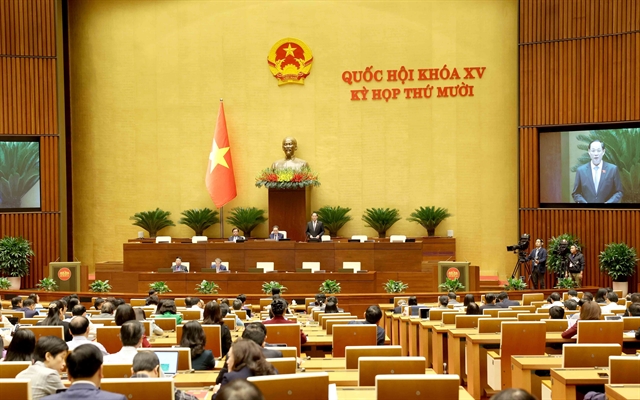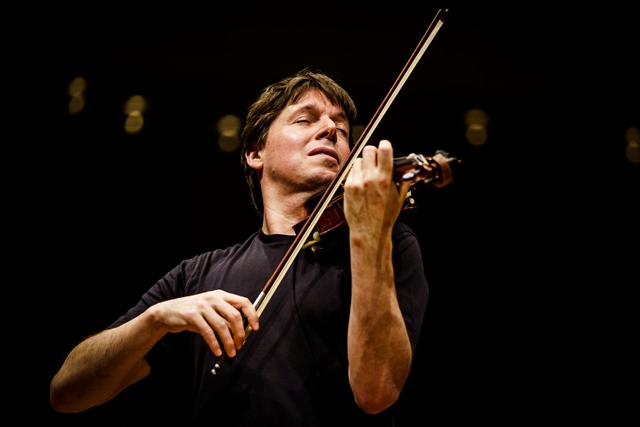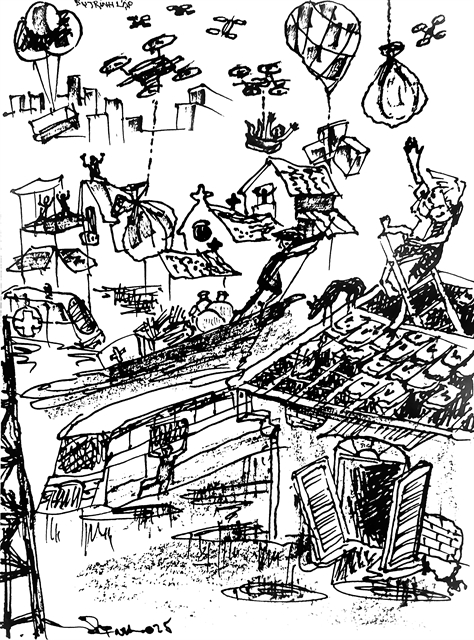 Talk Around Town
Talk Around Town
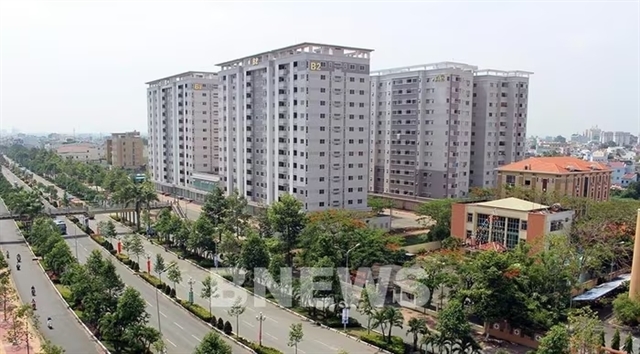
When considering old Vietnamese villages, people are quick to think of banyan trees, local wells and communal houses, which are widely seen as “ancient cultural icons” of rural areas. Beside their substantial real life value, they are symbolic of a community culture where people meet, talk and exchange news.
By Lê Hương
When considering an ancient Vietnamese village, people are quick to think of a banyan tree, a common water well and a communal house, which are widely seen as “ancient cultural icons” of rural areas. Besides their substantial real life value, they are symbolic of a community culture where people meet, talk and exchange news. People living far from their native villages often feel immense pride in such things, and miss them dearly.
There are many folk songs sung about such things:
Water from Hạ village’s well is clear and cool
Small paths leading to every corner
Local Bỏi Market is so bustling
A temple in the east and a pagoda in the west.
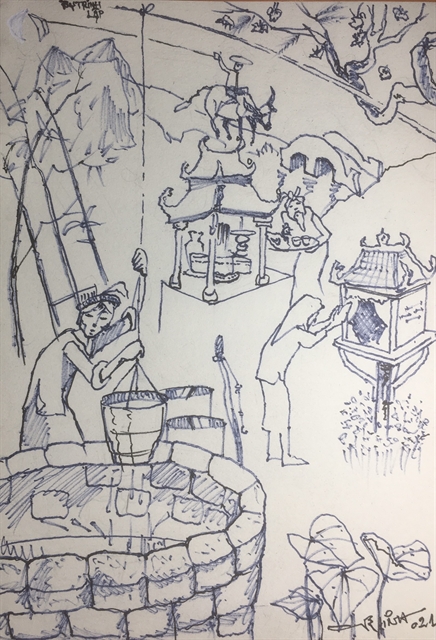
|
| Illustration by Trịnh Lập |
With all this in my mind, it is easy to understand the reaction of residents in Đường Lâm Village on the western outskirts of Hà Nội when a film crew vandalised one of their treasured wells.
The crew, making the comedy film Bồm Village’s Tale, put coloured powder on the local well so that it looked like it was built with laterite stone. The well, in Mông Phụ Communal House, belongs to a Level 1 Preservation Area of the National Heritage Site of Đường Lâm Ancient Village. Over time moss has constantly covered the wall of the ancient well.
Understandably, the villagers were furious and gathered at the communal house to force the crew to stop their work.
Concerned agencies joined the fray and soon the crew had to apologise and restore the well to its original appearance. One member of the crew, who painted directly on the well, also had to pay a fine of VNĐ2 million (US$88).
The film crew violated the law with their ignorant act, but it is the reaction of the locals and wider public from which we can draw a lesson.
Thousands of ancient wells still exist around the capital city Hà Nội, not only in heritage sites such as Đường Lâm and other popular tourism spots such as Cự Đà and Bát Tràng ancient villages.
They, simply, are the most important ancient cultural icons of northern rural villages, and should not be tampered with.
Aside from offering a pure supply of clean water, they bring a real spiritual value connecting the people to the land and providing a place for locals to meet. In the Vietnamese mind, these wells are the deepest areas of the village and are associated with their holiest values.
Whether they are round, rectangular, half-moon or octagonal in shape, or built by brick, laterite rock, rough stone or clay, these ancient wells possess special cultural values, slowly and delicately built over time. They are artefacts of living history.
However recent waves of urbanisation have posed a challenge, and many of the wells on the outskirts districts of the city have been abandoned. With running water piped into virtually every home, the special role of the wells is seen to be ignored.
Phạm Thanh Tùng, from the Việt Nam Architects’ Association, said that it was important that these cultural icons were maintained as part of a wider mission, at a recent workshop.
“If they are lucky to survive after ‘land fever’, the wells will be preserved thanks to the respect and fears of the middle-aged and older,’ he said.
“A quick survey in districts around Hà Nội like Phú Xuyên, Đan Phượng and Thường Tín showed that a great number of village wells have been broken or changed functions. The problem will remain for a long time as an indispensable consequence of the changes in modern life.”
A few months ago, local media reported a case in Ngọc Đình Village in Nam Đàn District in the central province of Nghệ An where locals mobilised VNĐ800 million to restore Trọt Quan Well, which is said to have been built in the Later Lê Dynasty (1428-1788).
The well will be part of Cung Mountain – Đạt Pagoda heritage site, connecting with the Kim Liên National Historic Site, the native village of President Hồ Chí Minh, as a special spot for tourists visiting the province.
In the past few years, the National Programme to Establish New Rural Areas has achieved lots of success. Locals have joined hands to build a countryside “worth living in”. Local amenities such as electricity networks, roads and stations have been built, while ancient cultural structures like temples, pagodas, communal houses and water wells have been well preserved and restored.
Often such moves are not based on state guidance, but the result of residents in various localities being creative, restoring and adding alluring highlights to their villages.
They have set up libraries, botanical gardens, multi-purpose gymnasiums, public swimming pools, and lined village roads with beautiful flowers. It is almost as if there is a secret competition to build an outstanding cultural environment of which everybody can be proud. It is within this context that it is clear that exploiting and enhancing the ancient cultural values of our villages is a good idea.
Indeed, there are some cultural activities that play such a key part in their community culture that without them the very fabric of the traditional culture would come under threat. The ancient quan họ (love duet) folk singing so beloved in its birthplace, the northern province of Bắc Ninh, needs the yards of communal houses, pagodas, and water fetching areas; the Dao ethnic minority group needs wild forests to organise its “forest-opening ceremony”; the Ơ Đu ethnic group needs streams and rivers for their worship ceremony for the thunder season.
Such activities form a key part of regional culture, and the Party and State have supported ethnic minorities to preserve and develop their cultural identity in multiple ways.
The spirit was highlighted at the recent National Culture Conference. Party General Secretary Nguyễn Phú Trọng said the State should pay more attention to preserving, restoring and developing traditional culture, intangible and tangible culture values of regions and ethnic groups.
“We should develop the soft power of Vietnamese culture in order to enhance the general power of the nation in the future,” he said.
It is, of course, the people themselves that need to take on the necessary tasks for these purposes. It is the people that must play an active role in creating, possessing and benefiting from cultural values. For what is a nation without the hard work of its people?
“We should let our offspring bathe in the traditional culture of the village well,” said Trần Văn Thức, an 80-year-old local resident. “That’s the deep meaning of the village well in modern times.”
The incident in Đường Lâm showed well the role of the local community in developing and preserving and culture. It was not local authorities that told the residents of Ngọc Đình Village to continue to use water from the local ancient well when tap water was available in every house. Just like it was not any heritage agencies that guided locals to restore the well. It is the people themselves who pooled money for the work, creating a park and a new culture space around the ancient well.
President Hồ Chí Minh probably understood the power of the people more than anyone, as he said in 1944: “We should establish a culture that guides our people in upholding national sovereignty and independence. That culture should encourage people to do everything for the sake of the country, putting the community's interest before their own. The fate of the whole nation is in the hands of our people. Culture should light the way for our people to go forward. ” VNS


